10 takeaways from Big Tech’s big earnings — from protocol.com by David Pierce
What Apple, Facebook, Alphabet, Microsoft and Amazon earnings say about the state of tech.




10 takeaways from Big Tech’s big earnings — from protocol.com by David Pierce
What Apple, Facebook, Alphabet, Microsoft and Amazon earnings say about the state of tech.
Wonder Tools for Wasting Less Time — from wondertools.substack.com by Jeremy Caplan
Excerpt:
In this post I’m sharing resources to help you stay focused and get more done:
I have no stake in any of these tools. If something else works better for you, let me know.
From DSC:
Talk about streams of content! Whew!

I received an email from Adobe that was entitled, “This week on Adobe Live: Graphic Design.” (I subscribe to their Adobe Creative Cloud.) Inside the email, I saw and clicked on the following:
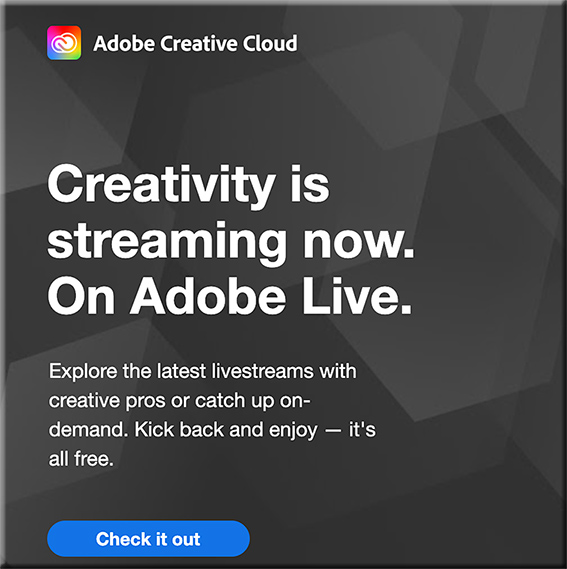
Below are some of the screenshots I took of this incredible service! Wow!
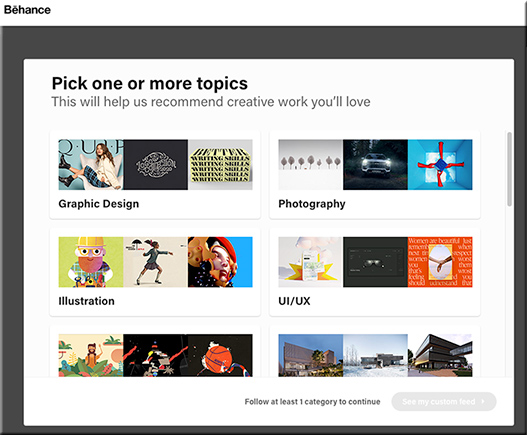
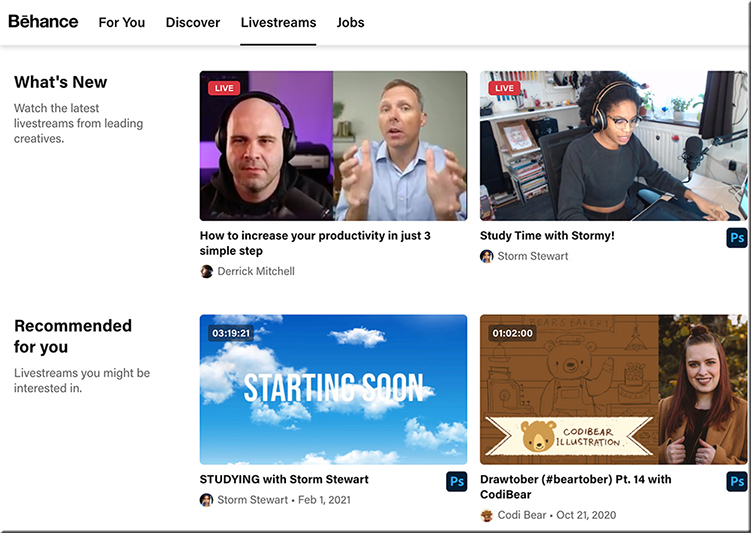


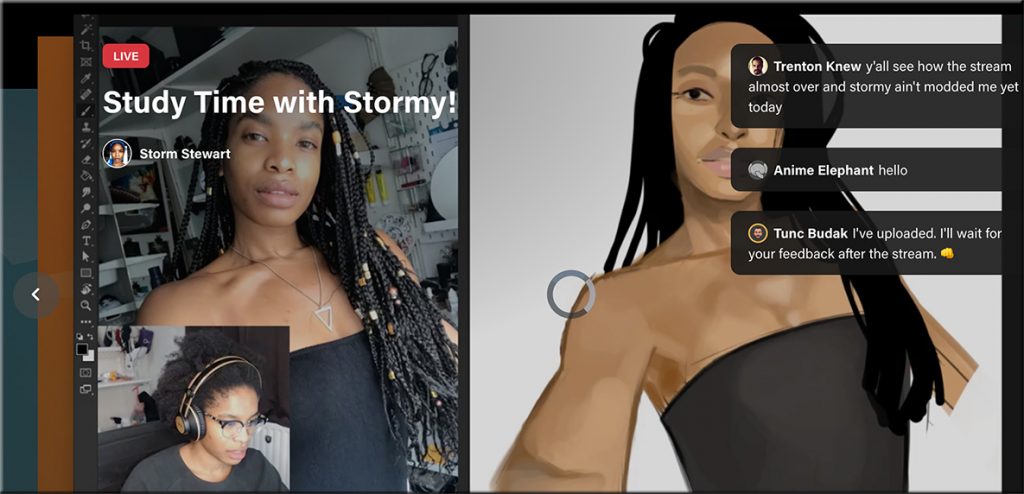

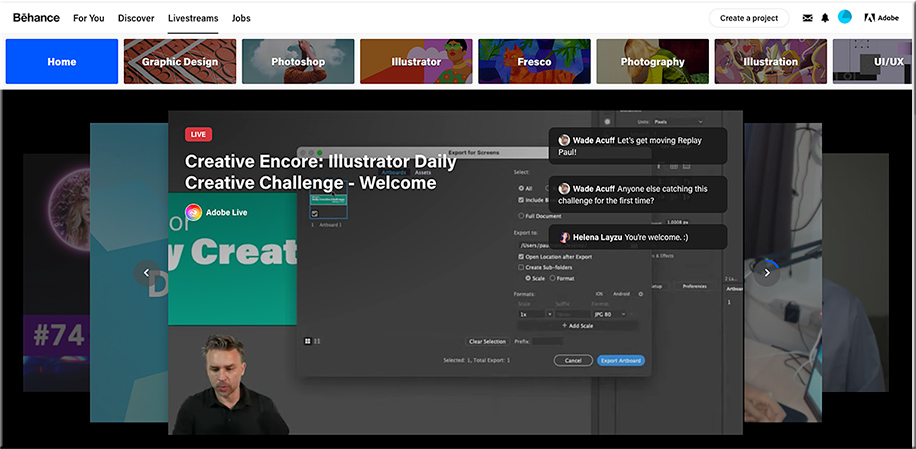

From DSC:
So Abobe — via Behance — is already doing several pieces of the “Learning from the Living [Class] Room” vision. I knew of Behance…but I didn’t realize the magnitude of what they’ve been working on and what they’re currently delivering. Very sharp indeed!
Churches are doing this as well — one device has the presenter/preacher on it (such as a larger “TV”), while a second device is used to communicate with each other in real-time.
Forever Changed: Education Predictions for 2021 — from thejournal.com by Dian Schaffhauser
Excerpt:
Teachers Will Become Massive Social Media Influencers
Teachers will be subject-matter experts who other teachers feature in video mixtapes and that parents will follow to support their students. Expect teachers to go live in Twitch-style “going live” environments. What can we expect in video?
Exciting new tools for designers, January 2021 — from by Carrie Cousins
Excerpt:
The new year is often packed with resolutions. Make the most of those goals and resolve to design better, faster, and more efficiently with some of these new tools and resources.
Here’s what new for designers this month.
From DSC:
After seeing the following two items, I wondered…should more professors, teachers, and staff members be on Substack?
Heather Cox Richardson Offers a Break From the Media Maelstrom. It’s Working. — from nytimes.com by Ben Smith
She is the breakout star of the newsletter platform Substack, doing the opposite of most media as she calmly situates the news of the day in the long sweep of American history.
Excerpt:
Last Wednesday, I broke the news to Heather Cox Richardson that she was the most successful individual author of a paid publication on the breakout newsletter platform Substack.
Early that morning, she had posted that day’s installment of “Letters From an American” to Facebook, quickly garnering more than 50,000 reactions and then, at 2:14 a.m., she emailed it to about 350,000 people.
…
The news of her ranking seemed to startle Dr. Richardson, who in her day job is a professor of 19th century American history at Boston College. The Substack leader board, a subject of fascination among media insiders, is a long way from her life on a Maine peninsula — particularly as the pandemic has ended her commute — that seems drawn from the era she studies.
Is Substack the Media Future We Want? — from newyorker.com by Anna Wiener
The newsletter service is a software company that, by mimicking some of the functions of newsrooms, has made itself difficult to categorize.
Excerpt:
…Substack, a service that enables writers to draft, edit, and send e-mail newsletters to subscribers. Writers can choose whether subscriptions are free or paid; the minimum charge for paid subscriptions is five dollars a month or thirty dollars a year, and Substack takes ten percent of all revenue.
The Year TV Leaped Into The Future — from protocol.com by Janko Roettgers
The lockdowns this year have transformed our homes into offices, schools, concert halls, movie theaters and gyms. Our homes are working harder for us, but so is our technology. The device that is working the hardest is perhaps the TV—becoming our lifeline to a far more virtual world.
Addendums:
The Second Year of The MOOC: 2020 Saw a Rush to Large-Scale Online Courses — from edsurge.com by Dhawal Shah
Excerpt:
This was the year that more people learned what a MOOC is.
As millions suddenly found themselves with free time on their hands during the pandemic, many turned to online courses—especially, to free courses known as MOOCs, or Massive Open Online Courses. This phenomenon was compounded by media worldwide compiling lists of “free things to do during lockdown,” which tended to include MOOCs.
Within two months, Class Central had received over 10 million visits and sent over six million clicks to MOOC providers. These learners also turned out to be more engaged than usual. In April 2020, MOOC providers Coursera, edX and FutureLearn attracted as many new users in a single month as they did in the entirety of 2019.
.
From DSC:
The pieces continue to come together…
...team-based content creation and delivery will dominate in the future (at least for the masses). It will offer engaging, personalized learning and the AI-based systems will be constantly scanning for the required/sought-after skills and competencies. The systems will then present a listing of items that will help people obtain those skills and competencies.
#AI #LearningProfiles #Cloud #LearningFromTheLivingClassRoom #LearningEcosystems #LearningSpaces #21stCentury #24x7x365 #Reinvent #Surviving #StayingRelevant #LifeLongLearning and many more tags/categories are applicable here.
Designed to Deceive: Do These People Look Real to You? — from nytimes.com by Kashmir Hill and Jeremy White
These people may look familiar, like ones you’ve seen on Facebook or Twitter. Or people whose product reviews you’ve read on Amazon, or dating profiles you’ve seen on Tinder. They look stunningly real at first glance. But they do not exist. They were born from the mind of a computer. And the technology that makes them is improving at a startling pace.
Is this humility or hubris? Do we place too little value in human intelligence — or do we overrate it, assuming we are so smart that we can create things smarter still?
Social strikes back — from a16z.com
Social Strikes Back is a series exploring the next generation of social networks and how they’re shaping the future of consumer tech. See more at a16z.com/social-strikes-back.
Excerpt:
Until recently, it was commonly accepted that “social” was done. The market had been fully saturated, the thinking went, dominated by the holy trinity of Facebook, Twitter, and Instagram. Turns out, rumors of social’s demise have been greatly exaggerated. Not only are we seeing the rise of innovative new social networks—from the earshare of Clubhouse to the seamless interactivity of cloud gaming—but having a social component has become a powerful acquisition and retention tool for every consumer product, across education, shopping, fitness, food, entertainment, and more. In this series, we reveal what new social looks like, the forces that are driving it, and how to build it.
Meet Me in the Metaverse — from a16z.com by Jonathan Lai
Excerpts:
There are many competing visions for how we’ll build the Metaverse: a persistent, infinitely-scaling virtual space with its own economy and identity system.
…
New social modalities will emerge in the Metaverse. Advances in cloud streaming and AI will enable new forms of engagement with friends—for example, the ability to pop into a persistent virtual world and discover new people and experiences together, entirely unplanned.
Live, Social, and Shoppable: The Future of Video — from a16z.com by Connie Chan
Excerpt:
Now, we’re about to enter a whole new era of video-first products that extend far beyond entertainment and gaming. If phase one of video was a laid-back experience, video 2.0 will be far more interactive and participatory, with users engaging with the platform, giving direct feedback on the content, and fundamentally shaping the experience in real time.
Also see:
Edtech’s Answer to Remote Learning Burnout — from a16z.com by Anne Lee Skates and Connie Chan
Excerpt:
While previous generations of edtech largely focused on in-school content distribution, more recently founders have turned their attention to after-school and out-of-school education. There’s a lot left to build. We believe post-COVID online education will differ from the past in key ways.
Building your own website is cool again, and it’s changing the whole internet — from protocol.com by David Pierce
Writers, creators and businesses of all kinds are looking to set up their own space online again. To do that, companies are trying to figure out how to deal with two very different internets.
Excerpt:
Websites are back. After years of being sucked into the vortexes of Facebook and Yelp pages, devoting their time to amassing Twitter followers and Instagram likes, creators and businesses alike have seen the benefits of hanging up their own shingle again. Legions of writers are setting up Substack newsletters. Millions of people and businesses are setting up shop for the first time online using Squarespace or WordPress. Wix reported 7.8 million new users in the last quarter alone, and more than 29% revenue growth.
…
Substack doesn’t see itself as a newsletter platform, or an email-based product. The company is fundamentally interested in fostering direct relationships between readers and writers, rather than let them be mediated by companies whose interests are not always aligned with either side.
The driving force behind all that growth? Thanks to a pandemic closing stores, keeping people at home and leaving a lot of people without jobs, the only way to move forward is to figure out the internet.
From DSC:
Though I really like WordPress — and this blog uses it — look at the stock performance in 2020 for Wix!
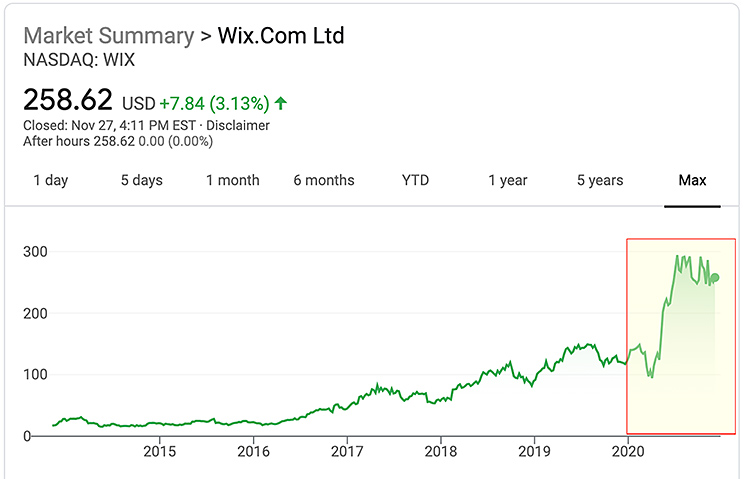
Our youngest daughter and I are going to set up a blog for her, as she loves to write. The idea was from her and my wife, but I love it! I think it’s highly motivating to her and she can have a voice…that she can share her writings with others. She’s got quite an imagination — so look out all! 🙂
From DSC:
Who needs to be discussing/debating “The Social Dilemma” movie? Whether one agrees with the perspectives put forth therein or not, the discussion boards out there should be lighting up in the undergraduate areas of Computer Science (especially Programming), Engineering, Business, Economics, Mathematics, Statistics, Philosophy, Religion, Political Science, Sociology, and perhaps other disciplines as well.
To those starting out the relevant careers here…just because we can, doesn’t mean we should. Ask yourself not whether something CAN be developed, but *whether it SHOULD be developed* and what the potential implications of a technology/invention/etc. might be. I’m not aiming to take a position here. Rather, I’m trying to promote some serious reflection for those developing our new, emerging technologies and our new products/services out there.
“You see this most fundamentally in Bitcoin and in blockchain. The keys will be more and more in the hands of the individual.”
DC: I could see cloud-based learner profiles along these lines too. Each individual will say who gets access to their profile. https://t.co/2jnWBTxeRs
— Daniel Christian (@dchristian5) September 29, 2020
From DSC:
Along these lines…
Sometimes, I think we need to be very careful with Artificial Intelligence (#AI) — which elements of it and which applications of it that we use in our society and which we don’t move forward with. But in the case of cloud-based learning profiles (some might say competency profiles), AI makes sense. Algorithms could make sense. Data mining could make sense.
A cloud-based learning profile might not make sense always to us — as it could be very large indeed. But AI-based algorithms could assist with finding appropriate matches between jobs, competencies, passions, skills, and candidates.
Such services will likely be part of a next-gen learning platform.
Visualizing the Social Media Universe in 2020 — from visualcapitalist.com Aran Ali
Per this week’s Lecture Breakers Weekly! from Dr. Barbi Honeycutt:
Break up your online lectures with the Watch Party! Here’s how you can do it:
Instead of presenting during the synchronous class time, you can now focus completely on managing the chat, prompting discussion, and responding to students’ questions and ideas in real-time. And be sure to record and save the chat for students who couldn’t attend the live session or want to review it later.
From DSC:
This is one of the kind of things that I envisioned with Learning from the living class[room] — a next-generation, global learning platform.
Learners could be watching a presentation/presenter, but communicating in real-time with other learners. Perhaps it will be a tvOS-based app or something similar. But TV as we know it is changing, right? It continues to become more interactive and on-demand all the time. Add videoconferencing apps like Zoom, Cisco Webex Meetings, Blackboard Collaborate, Microsoft Teams, Adobe Connect and others, and you have real-time, continuous, lifelong, relevant/timely, affordable, accessible, up-to-date learning.
Also, you have TEAM-BASED learning.